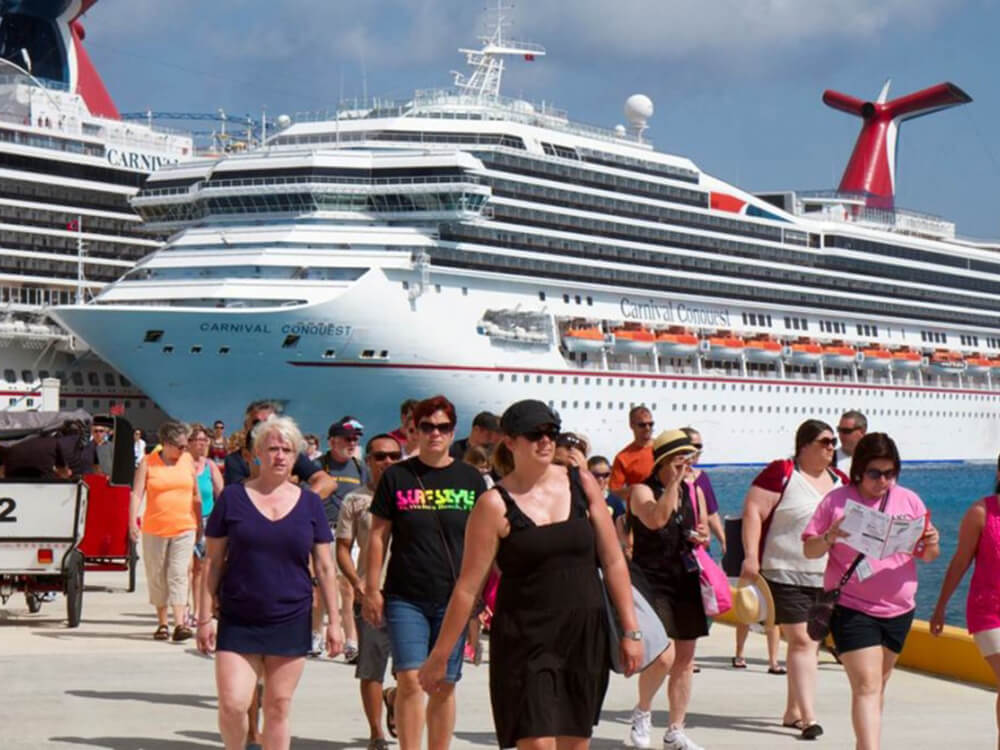Tourism Ports and the Economic Multiplier

The tourism industry has evolved significantly over the past few years after the growing global interest in their activities, due to their accounting for 40% of the trade in global services, and their role in the diversification of the sources of income and the creation of work in different sectors. The activities of cruise ships are regarded as the fastest growing among them, which has dramatically grown over the past three decades at rates that range between 7 and 8 percent annually, and has expanded geographically in many markets, the largest of which is in the Caribbean Sea, which receives the largest cruise ships in the world. Even though they still make up a small part of global tourism income yields, at only about 2%, but a number of countries have invested huge amounts during the past few years in this sector and in the development of specialized ports to receive large cruise ships, so as to promote their cities and strengthen their position as a global tourist destination that is at the top of the list of destinations for mega cruise ships.
The activities of ocean cruises have diversified economic returns for the economy, both through what is spent directly in the local economy or its multiplier effect. Reports indicate a continuous annual increase in the number of passengers on cruises or cruise liners, which is expected to exceed 24 million passengers by the year 2018. The gradual orientation of travelers towards cruises and in particular leisure cruise lines has encouraged countries to inject more investments into the tourism sector and create a suitable environment that would enhance the role of ocean leisure tourism.
To determine the ratio of the economic multiplier and its impact on the procurement and supply chain and to assess the rate of the indirect impact requires that information be provided on local multiplication, and estimates of inputs and outputs through general equilibrium models, as the volume of multiplication in any area depends on a combination of the local economy and the activity of the sector concerned. The tourist may spend money acquired outside the region, for example, in a local restaurant when visiting (e.g. QAR 1000), which is direct spending. The restaurant or local market thus earned income of QAR 1000. In turn, the restaurant owner may save part of it (QAR 100) in profit, pay fees and taxes to various authorities in the amount of QAR 200, and spend the amount of QAR 300 on imported goods and the rest on products from local suppliers, for example, QAR 400 (which is indirect spending). The local supplier has thus earned QAR 400 additional income, which makes the economic effect of tourism spending more than the amount of QAR 1000 spent by the tourist, as it is equal to the QAR 1000 acquired by the restaurant owner in addition to the QAR 400, which came in as revenue to local suppliers. The effect will be multiplied if the local supplier spends it locally.
The volume of economic returns from ocean leisure activities depends largely on the type of the port, the period the vessel stays there, the route of its journey and the personal preferences of tourists. Its effect on the procurement and supply chain increases with the length of the period spent by the vessel in the port. Its impact encompasses a wide range of economic sectors, and is divided into returns derived from tour companies with cruise ships such as commissions earned by travel agencies and tour operators, revenue from refueling vessels, fees and costs of ports, towing and supply services, wages for workers in those sectors, revenue from providing them with supplies, food and drinking water, the costs of advertising and marketing and other services.
Similarly, the returns derived from tourists and crews of the ships that create revenue for retailers and the various means of transportation such as taxis, buses and the metro, as well as their spending on food and drinks - even though this has a lesser effect due to the fact that tourist trips usually include main meals, as well as returns to the organizers of interior tours. Thus almost all sectors get some return, whether directly or indirectly, except the hotel sector. The returns on the activities of cruise ships usually constitute more than 50 percent of the revenues of cruise ships and the returns of tourists and crews combined.
The development and preparation of ports to receive large cruise liners play a key role in increasing the tourist trade in countries, and has a direct and significant effect on multiple sectors in the economic system, because their activities are linked to an integrated system of economic sectors that cater for the needs of tourists. The optimal utilization of the natural and human resources in this regard, has a prominent impact in achieving the aspirations of countries in the diversification of the sources of income and securing new business opportunities and works in various sectors for its citizens and those residing in their lands.`